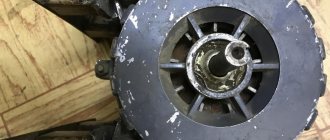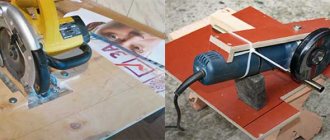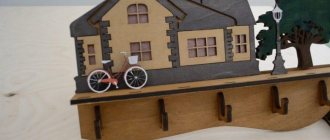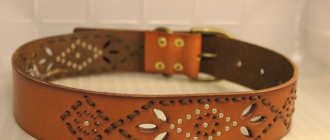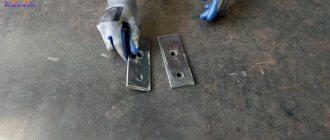Icer
3779 0 2
Icer October 11, 2018Specialization: master in the construction of plasterboard structures, finishing work and laying floor coverings. Installation of door and window units, finishing of facades, installation of electrical, plumbing and heating - I can give detailed advice on all types of work.
I can't afford to buy a professional table saw, so I decided to make my own. I built it on the basis of an electric drill using woodworking waste and am ready to tell you about all the stages of its assembly.
Necessary materials
To make a circular saw for your home from a drill, you do not need to use a special tool or involve an expert. If you have the desire and enough free time, you can do all the work yourself. To do this, you will need to prepare the following materials in advance:
- Wooden blocks with a section of 30x30 mm;
- ball bearings;
- plywood or OSB sheet;
- fastening hardware;
- door hinges.
In addition, you need to prepare a saw blade, a set of cutting bits for wood and a drill, which will subsequently be used as a circular motor.
For greater reliability, instead of wooden blocks and OSB sheets, it is better to use metal sheets and profiles. Due to the cost of rolled metal, the price of such a stand will be approximately 2,000 rubles higher.
The cost of consumables for the manufacture of a wooden machine is approximately 1,500 - 2,000 rubles, a drill with a power of 800 W is about 2,000. The price for a factory-assembled machine with similar productivity starts from 8,000 rubles, and the average is 13,000.
How to make a washing machine engine
If there is an old washing machine collecting dust on the farm, the motor of which is in working order, it can be used as a basis for making a circular washing machine.
Remove the brushes, commutator and speed sensor wires from the housing. For reliability, it is recommended to check them with an ohmmeter.
Connect both collector outputs and coil contacts into a complete structure. Be sure to check the functionality of the device by connecting it to the network.
To change the direction of rotational movements, the contacts should be swapped.
You can increase the functionality and reliability of a circular saw by equipping it with a device that will increase or decrease the rotation speed of the cutting blade. A dimmer or trigger of a hand-held electric tool is used as such a device.
After making the base of the saw, you can begin arranging the tabletop. To do this, use a metal frame on which the machine motor is welded.
Tool selection
Using a drill as the power unit of a machine is a very profitable and convenient solution. The tool can be dismantled at any time and used for its intended purpose; in addition, it will be useful when constructing the machine.
Household drills are equipped with a low-power electric motor. Therefore, a machine with a power plant made from such a tool is suitable for cutting small-section bars, cutting sheets of plywood and OSB.
A screwdriver can be used as a drive. However, the power of its motor will only be enough to cut sheets of plywood or thin boards. Therefore, its use is advisable only in exceptional cases.
When using semi-professional and professional tools, you can increase the diameter of the saw blade and, as a result, productivity.
Design
It is better to make the machine small in size so that it can be put away on a shelf when its presence is no longer needed. Its design is extremely simple:
- base made of a thick board or piece of chipboard;
- working surface;
- racks;
- shaft with circular saw;
- electric drive in the form of a drill.
We make the base from a 30 mm thick chipboard sheet; it is enough to cut out a piece measuring 300x250 mm. For the desktop, we choose a sheet of duralumin 4 mm thick - it is quite rigid and light, so as not to weigh down the entire structure. In the right place we make a hole for the circular saw measuring approximately 160x10 mm.
The holder for the drill itself can be made independently - all the necessary dimensions and drawings are available on the Internet, but a similar design for the shaft with a saw can be purchased in a store or at a clothing market. The bearing for the shaft must be chosen to be dust-proof - when the homemade machine is working, there will be a lot of small waste in the form of wood dust.
A circular saw from a drill is assembled according to the standard scheme: first, all parts are fixed to the base, then the work table is mounted and the drill is connected.
Making a stationary machine from plywood
There are many ways to make a stationary stand for cutting wood, we will look at one of the popular ones. The most inexpensive and easiest to manufacture is a machine with a wooden table. We will give a general manufacturing algorithm, but it is worth considering that each master makes it for his own needs, taking into account his needs. To make such a stand, you must perform the following steps:
- Apply markings to round the corners on one end of the wooden beam. It is also necessary to mark holes for the axles at the ends and in the center of the bar.
- Using the previously made markings in the center of the block, on opposite sides, use a wood saw to make recesses for installing bearings. Connect the resulting grooves with a through jumper.
- Drill holes in the end and on the edge of the beam according to the markings made.
- Press the rolling bearings into the prepared grooves. To do this, you need to install the bearing in the seat and mount them in place through a wooden plank.
- Determine the center of the mounting pin, which will act as an axis.
- Mount the pin into the mounting hole, accurately aligning it in the central position. Secure its position using nuts and locknuts. Install two profile washers on the installation side of the saw blade and secure their position with a nut.
- Prepare a small wooden beam. Drill a blind hole in one of its ends.
- From a sheet of OSB / plywood (depending on what you chose), cut two rectangular blanks. Place a block on the corner of one of them, with a drilled hole inward. Secure its position with screws.
- Using hardware, connect the prepared OSB/plywood sheets together.
- Connect the movable beam with the beam on the end wall of the future stand.
- In the OSB/plywood sheet that will serve as the other end wall, mark the position of the longitudinal groove. Its center should coincide with the center of the hole in the end of the movable beam.
- Use a jigsaw or other tool to cut a groove.
- Connect the base of the machine and the prepared OSB / plywood sheet with a groove.
- After this, screw a pin into the hole in the end of the movable beam. Screw a nut onto the protruding end. For convenience, it is better to use a wing nut.
- At the bottom of the movable bar, symmetrically to the center, install and fix a rectangular panel cut from an OSB sheet / plywood.
- Mount a metal half-clamp to the edge of the installed panel. It is necessary for fixing the drill, which will be used as a circular drive.
- Cut out the working surface of the machine from a sheet of OSB / plywood. To facilitate access to the saw blade, door hinges must be installed on one of the inner sides.
- Install the saw blade onto the drive shaft.
- Turn on the drill. Slowly lower the work surface to a horizontal position. In this case, the rotating saw blade will cut a hole in the slab necessary for work.
After the final stage, you can begin to work. Using the protruding pin, you can adjust the cutting depth of the workpiece.
You can view detailed instructions by following the link.
Table production process
- You need to cut a tabletop of the required size from a sheet of plywood. Markings are applied to the lower area using a metal ruler and pencil. Cut the plywood with a jigsaw, milling the edges if necessary. If the plywood is not laminated, we clean the surface of the table with sandpaper.
- They shift it and make markings from the bottom for attaching a manual circular saw. To do this, remove the disk from the device and place it with the sole in the required place. We make marks on the table top and at the base for fasteners and a hole for the saw blade. Drill holes for the bolts. They will be twisted from above under the tabletop and held in place with nuts at the bottom. Therefore, the holes are countersinked from the edge of the working plane, and the bolt heads are leveled so that they do not protrude.
- If it is planned to cut the material at different angles, the slot for the saw-tooth circle is made in the shape of an inverted trapezoid. For straight sawing, an ordinary groove is made. Before marking the slot and holes for fasteners, you need to apply a saw, adjust the marks and only then cut.
- Draw with a pencil the areas where the stiffening ribs are located. They are made from boards and installed below 8-9 cm from the edge of the tabletop itself. The table legs must be fixed to the ribs. The ribs are secured with self-tapping screws at intervals of 15–25 cm, and in addition they are glued with PVA. Self-tapping screws are screwed on top, under the tabletop, the heads are completely recessed. The ribs are fastened together with self-tapping screws.
- The legs are made of timber or boards, their length will be from 100 to 113 cm. The legs diverging downwards will give significant stability. They are fixed with large bolts twisted on the outside and reinforced with nuts on the inside. Timber ties will strengthen the frame.
- In order to adjust the height of the table, nuts are attached at the bottom into which M14 bolts are screwed. Now you can secure the saw from below by passing the drive into the prepared slot.
- We attach an electrical outlet to the table, run an electrical cable from it and set the switch. Power to the outlet will be transferred from the switch. We stretch the cable from it to the nearest source in the workshop. With the support of the construction screed, we fix the ON-OFF key on the body of the circular saw in a recessed state.
- Let's start producing auxiliary stops. For the stop you will need a number 30 square cut aluminum pipe and 2 screws with wing nuts. We saw off a piece of pipe along the length of the tabletop, making holes for screws 3 cm from the edge. 2 clamps are cut out from pieces of plywood. The system is ready.
- To process across the table, we use a plywood sled. We align them with the edges of the table, press them down and move them along the toothed circle. We cut a hole in the passage area of the circle. Small components can be placed directly inside the slide and sawed. Dust will be removed from under the table, but a significant part of it will still fly upward, so it is good to supplement the device with an upper dust extractor.
Working with a circular saw is very dangerous, for this reason it is necessary to take care of protecting your fingers. Cut a pusher from a piece of wood or furniture board.
Additions to the completed design
Some craftsmen, when assembling a table for a hand-held circular saw according to unique drawings, completely remove the factory safety cover and replace the factory platform with a homemade one. If cutting at an angle is not planned, you can remove all devices for adjusting the tilt of the disk. The electric saw is fixed directly to the new base, which makes it possible to gain a couple of millimeters of cutting depth.
Without an internal casing, it is easier to remove the blade; the electric saw will not become clogged with shavings when working with wet boards. Dismantling will require extra time, but the service life of the motor is preserved and overload is prevented.
Mounting a circular saw
The matter remains small. The circular electric saw is located inside the prepared hole. The sole is secured with bolts, and the gear drive must fit freely into the socket.
The table for the circular saw is almost ready. Now it needs to be treated with a moisture-protecting material, then coated with varnish in several layers (to minimize slipping).
The resulting system can be supplemented with anything at the user’s discretion (safety cover, device for adjusting the tilt of the disk, carriage, etc.).
Another step-by-step manufacturing algorithm
If it is necessary to cut plywood, laminate or thin boards, you can make a household circular saw driven by a hand drill. To do this you will need the following materials:
- OSB or chipboard sheet;
- wooden blocks;
- working shaft from an angle grinder;
- metal sheet 1 mm thick;
- clamp;
- fastening hardware.
In order to make a mini sawing machine, you must perform the following steps:
- From a sheet of metal, a clamp and a drive shaft from an angle grinder, assemble an adapter for a drill. In addition, such a nozzle can be ordered on the Aliexpress website by clicking on the link.
- Mark the location for attaching the drill holder on the back of the working surface of the future work table.
- Secure the adapter using wooden blocks and countersunk screws.
- Make a groove for installing the saw blade.
- Install two rectangular strips on the longitudinal edges of the table and screw them to the work table of the machine; they will act as the legs of the machine.
- For safer use, a sheet of thick plywood or OSB must be screwed to the bottom of the table.
By watching the video below, you can familiarize yourself in detail with the manufacturing process of such a machine.
Characteristics and power
The functionality of using the equipment will depend on the correct choice of parameters, including speed indicators and drive power. The power rating is affected by the maximum permissible diameter of the toothed saw. It is believed that to process lumber with a thickness of about 10 millimeters, an electric motor with a power of 1 kW will be required. Based on the thickness of the processed and sawn timber, you should select the power of the electric motor.
Transmission from the drive in a self-made circular machine is best done using a V-belt. This allows you to ensure the necessary safety of using the equipment. When foreign objects get under the saw, the V-belt drive will slip on the pulleys, which eliminates injuries and jamming of the working disk.
Factory-made screwdriver attachments
Today, there are factory adapters on the domestic market that can be used to turn a drill into a hand-held circular saw.
Their advantages include:
- Workmanship;
- Compatible with any type of drills and screwdrivers;
- Adjustment of cutting angle vertically and horizontally;
- Ease of use.
Despite the advantages, such adapters have a number of disadvantages. Among them are:
- Limitation on cutting thickness. This is due to the fact that such machines are adapted to a specific disc diameter. Increasing the thickness of the cut is possible only by purchasing a more efficient adapter;
- High cost, which exceeds the price of a home-made device several times;
- Expensive spare parts and their lack of free access.
Design
It is better to make the machine small in size so that it can be put away on a shelf when its presence is no longer needed. Its design is extremely simple:
- base made of a thick board or piece of chipboard;
- working surface;
- racks;
- shaft with circular saw;
- electric drive in the form of a drill.
We make the base from a 30 mm thick chipboard sheet; it is enough to cut out a piece measuring 300x250 mm. For the desktop, we choose a sheet of duralumin 4 mm thick - it is quite rigid and light, so as not to weigh down the entire structure. In the right place we make a hole for the circular saw measuring approximately 160x10 mm.
The holder for the drill itself can be made independently - all the necessary dimensions and drawings are available on the Internet, but a similar design for the shaft with a saw can be purchased in a store or at a clothing market. The bearing for the shaft must be chosen to be dust-proof - when the homemade machine is working, there will be a lot of small waste in the form of wood dust.
A circular saw from a drill is assembled according to the standard scheme: first, all parts are fixed to the base, then the work table is mounted and the drill is connected.
A selection of products from AliExpress
On the Aliexpress website, the buyer is offered various adapter options to choose from, with which you can turn a regular drill or screwdriver into a hand-held circular saw. The most optimal of them is a set consisting of a set of saw blades of various diameters and drive axle shafts.
In addition to them, the delivery set may include cutters of various diameters for cutting small grooves.
We present to your attention a selection of the 3 best offers that can be found on AliExpress.
- The best set in terms of price and quality ratio. The kit includes a disc with a diameter of 110 mm. Adapter, washer, nut and key for securing the disk. The best choice. View on AliExpress.
- The best set of different discs. The set includes 2 adapters and 5 discs (from 22 to 44 mm) for sawing various materials. Made of stainless steel. View on AliExpress.
- Another interesting set of 5 discs at a reasonable price. The set includes 5 discs with a diameter from 22 to 44 mm, differs from the previous one in price - slightly lower, because... Not many have been sold yet. So hurry up and buy. The quality is no different from the previous one. View on AliExpress.
Pay attention to the number of reviews, rating and price - hurry up to buy the nozzle while the discount is valid.
Kinds
Do not think that mini saws are represented by only one standard model. In fact, you can find many different types of this instrument on sale today. It will be possible to choose the ideal option for any work.
It is worth considering in detail what types of small circulars exist and how they differ from each other.
Manual
This instrument has a rather complex design and structure. As a rule, these types of tools are designed to work with fairly thin and pliable materials.
Using them, it is permissible to perform the following tasks:
- saw wood moving along the grain;
- sawing wood across the grain;
- cut various subtypes of wood (these include materials such as MDF, laminate and chipboard);
- cut metal with a thin and soft structure.
Such instruments have the following characteristic features:
- they have very modest sizes, making them easy to use and move from place to place;
- are distinguished by their low weight (this figure rarely exceeds 2 cm);
- as a rule, these models have low power;
- The saw blade size in hand saws is small;
- The cutting depth of this tool is also not very deep.
Disk
The mini circular saw also has a rather complex design. The main part of this tool is a disk designed for cutting various materials. This element has special teeth and is driven by starting an electric motor. Such tools are good because they are usually equipped with a number of additional functions that are very useful during certain work.
Such additions include the following:
- the ability to adjust the cutting depth - for this it is possible to shift the cutting half of the disk in relation to the thrust base of the device;
- removal of dust and chips - a number of tool models have a special connection required for connecting an industrial-type vacuum cleaner (this modification is especially relevant when it comes to large-scale repair work in order to prevent dust from settling on other pieces of furniture);
- protection against accidental shutdown - often to initiate a circular saw on wood you need to press two buttons in succession;
- continuous operation (without breaks) - this useful addition comes in handy if you plan to make fairly long cuts that take a lot of time.
Tabletop
Otherwise, such a circular saw is called stationary. It is multifunctional and very convenient to use. Moreover, such a machine can be made with your own hands, which is what many home craftsmen do. Of course, this unit will take up more free space, but it will also be more productive in its functions.
Rechargeable
Since modern high-capacity batteries have impressive dimensions, they hardly fit into the small body of a mini-circular. A capacious battery does not fit in this design. It is necessary to take into account the fact that the good thing about using these tools is that you don’t have to stay close to places where there are sources of electricity.
Rechargeable models are also good because their owner can stock up on an additional battery. The latter will make it possible to extend the operating time of the unit.
Safety precautions at work
The presence of electrical components and a rapidly rotating saw blade makes a circular saw a highly dangerous tool. Therefore, when working on it, you must follow the following safety rules:
- Use protective clothing and glasses to protect your eyes;
- Start cutting workpieces only after the saw blade has reached its maximum rotation speed;
- It is necessary to work on the machine cyclically. After 15 minutes of continuous operation, allow the tool to cool for the same period of time;
- Install the saw blade only in the direction of rotation of the drill spindle. To do this, there is an arrow on the side of the disk indicating the direction of rotation.
Design options
When exploring the question of how to make a circular saw with your own hands, you can work out several options:
Note!
- Do-it-yourself compressor: selection of materials and tools for assembly at home + step-by-step instructions for making and assembling yourself
- Homemade products for the garage with your own hands: options for products for arranging a garage, detailed diagrams and drawings for creating with your own hands
- Do-it-yourself press - design features, choice of manufacturing materials. Step-by-step instructions for making it yourself + simple diagrams and drawings
- A circular grinder, which is mounted on a machine made of wooden beams and boards.
- Installation on the frame of a hand-held circular saw.
- Making a stationary circular saw from an old wooden table and a washing machine motor.
- Manufacturing a frame from a metal profile, followed by installation of a powerful electric motor taken from any industrial equipment.
All these options have shown their viability in practice. The advantages and disadvantages of these schemes can only be determined by comparison, but for each of the creators of the designs, his brainchild is certainly the best.
If you plan to saw thick boards using a circular saw, a weak engine is unlikely to cope with this. A thick array requires a powerful electric motor and a metal machine.
Using a grinder as a working unit, it will be possible to trim small bars, but for long-term work, during which long deep cuts are made, it is not suitable, since the continuous operation time of a tool of this type is very limited.
The engine from the washing machine will require the creation of a gearbox. Experience shows that you cannot expect high performance and excellent cutting quality from a circular saw equipped with a washing machine motor.
How to make a key for connecting a circular machine
To produce a key, you need to disassemble the frame of the angle grinder to find the wiring. They must be attached to the switch located at the finished base.
You can try an easier method: drag the start key with a zip tie. In this situation, the device must be connected to the network to start operations.
Large homemade circular saw
When making a frame for the top of the saw, it is best to use a metal corner 25 mm wide. In this case, the rectangle, which will represent the frame of the upper part of the homemade circular, should have dimensions of 600x400 mm. Next, four pipes are welded in the corners of this quadrangle, the diameter of which should be 17 mm and the height should be approximately 2.2 m.
After this, it is necessary to strengthen two corners on the frame, on which the bearings will later be fixed. The distance between these corners directly depends on the length of the shaft. To fix bearings, as a rule, clamps are used. It is best if the bearings installed on a homemade circular are closed. This way you won’t have to worry about wood chips getting into the space between the balls, rings and separator. Don't forget to also cut a thread at the very end of the shaft so that you can install a cutting blade on it later.
Circular saw device.
The lower part of the circular saw should be made much more massive, which will provide it with the necessary stability and reliability. Therefore, when making the lower frame, you need to take a corner with a width of at least 40 mm. Next, across the frame it is necessary to secure two additional corners, which will later support the motor of the homemade circular saw. The most suitable motor for a DIY circular saw is an asynchronous three-phase motor with a power of at least 1.5 kW and 1500 rpm. The pulley groove should be quite large, approximately 80 mm, and it should be mounted directly on the shaft itself. In addition, you will need to weld a fairly small metal platform to the frame on which the starting device will be placed. Large pipes 2.2 m long, which you previously welded in the corners of the frame, are necessary for high-quality tension of the belt so that the metal wings press the thin pipes.
Base
In the question of how to make a , the most important thing is to remember the functionality of the base. It is best to install the table on a high-quality and rigid base that does not bend or wobble. This ensures safe operation and smooth cutting.
If possible, it would be good to weld it from a metal corner in accordance with the dimensions of the finished tabletop. As a last resort, it is permissible to build the base as a wooden base.
